With the number of shotguns available, it can be difficult to decide which one is right for you.
In this article, we will evaluate the most important elements to consider when choosing a shotgun for target shooting, addressing the following topics:
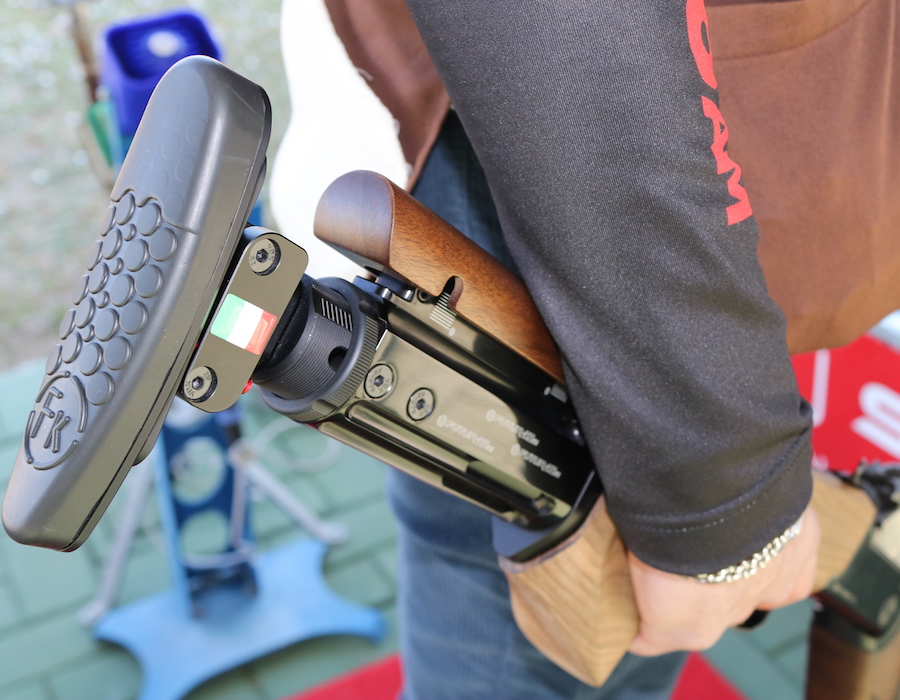
Why an over/under shotgun is used in target shooting
Surely you know that there are different types of smooth-bore shotguns such as over/under, double-barreled, semi-automatic and more rarely single barrel single-shot (mainly used for hunting).
Any type of smooth-bore shotgun can break a target, but for the vast majority of shooters, the over/under shotgun is the best solution. But why?
The first reason is due to the fact that the vertically over/under barrels combined with a narrower line of sight make it possible to hit small and distant targets, such as clay pigeons. On the contrary, the double-barrel has a wider aiming plane that allows more instinctive but less suitable shooting concerning the rib and sight alignment and distant or moving targets.
Even the semi-automatic shotgun has only one barrel and therefore would technically be on a par with the over/under, however, another advantage of the latter emerges.
Given the number of barrels, the over/under shotgun tends to weigh more than a generic semi-automatic and, as a result, can absorb the recoil better, increasing the shooter’s comfort when facing long series of targets or shooting heavy-weight cartridges.
However, often it is possible to find shooters who prefer using a semi-automatic shotgun, and some companies are increasing the production of semi-automatics dedicated to shooting sports.
In some disciplines, the use of a semi-automatic shotgun can be more of an advantage in Trap and Skeet, in which clay targets are engaged at shorter distances, than in hunting, and light-weight cartridges are used.
Modern semi-automatic machines weigh much less than over/under shotguns and double-barreled shotguns. In addition, the reload mechanism (for example, the inertia system) absorbs part of the recoil. The result is a shotgun that can be handled and tilted faster than an over/under.
As a result, in these situations, the choice between semi-automatic and over/under will essentially depend on the preferences and characteristics of the shooter given the combination of particular advantages and disadvantages.
The real potential of an over/under shotgun arises in its versatility and ability to offer the shooter the best solution for engaging all the different types of targets.
On the over/under, unlike the semi-automatic, two types of chokes can be mounted to optimise the efficacy of the first and second barrel shots based on the discipline practised and the type of cartridge.
The expulsion of the shells must also be considered. Certainly, on the platform with other shooters, the over/under is once again the best solution since it has automatic extractors and the shooter doesn’t have to bend down to collect the shells.
To conclude, last but not least, we also consider the safety factor. An over/under, when opened, is completely safe and always allows you to check at a glance if there is a shell in the barrel. The semi-automatic no and, if used on the platform, requires greater attention and control.
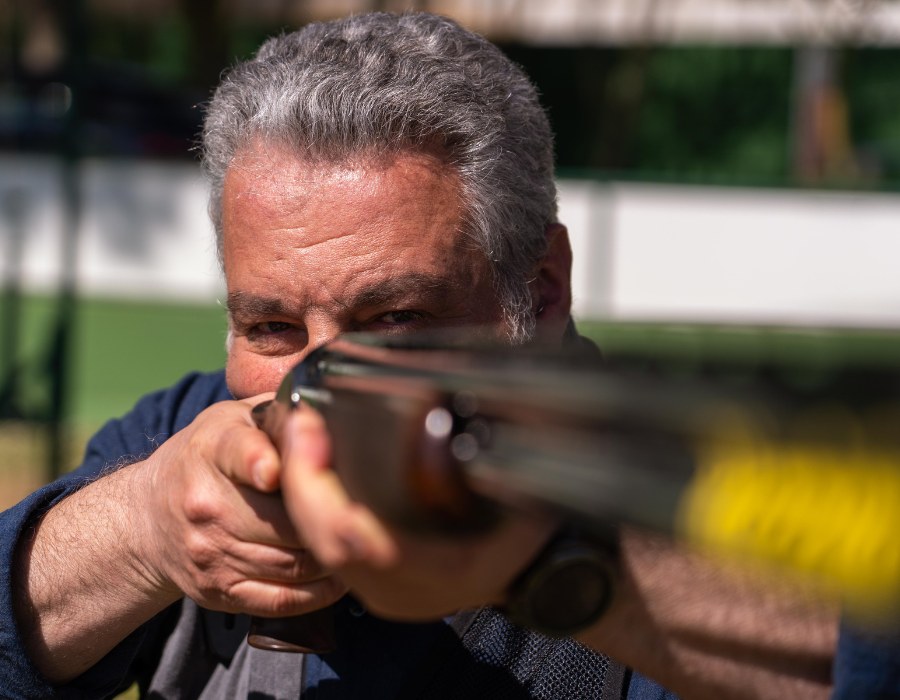
Target shooting and hunting shotguns: what they have in common and how they are different
A large percentage of shooters are also hunters, who are dedicated to target shooting to stay trained or simply for a passion. In any case, even those who are not hunters, given the used market, might consider buying a hunting shotgun for target shooting.
But is it really the right choice?
In a sense, target shooting and hunting shotguns (talking about over/under) have similarities. In both cases, the phases of bracing, pointing and shooting are exactly the same. This could lead to thinking that even a hunting shotgun on the platform is fine.
In reality, the two types of shotguns have considerable differences, even if not immediately visible and perceptible.
The first and most important aspect is once again its weight.
In general, hunting shotguns are designed to be lighter, as they are often transported all day for long distances. On the other hand, over/under shotguns, for their intended use, are heavier because the shooter will move it and pick it up much less even though it is done repeatedly. The greater the weight, as previously seen, improves the management of the recoil.
Furthermore, over/under target shooting shotguns, compared to double-barreled and under/over hunting shotguns, also have more solid and robust closing mechanisms in view of the greater number of cartridges that will be fired from the shotgun.
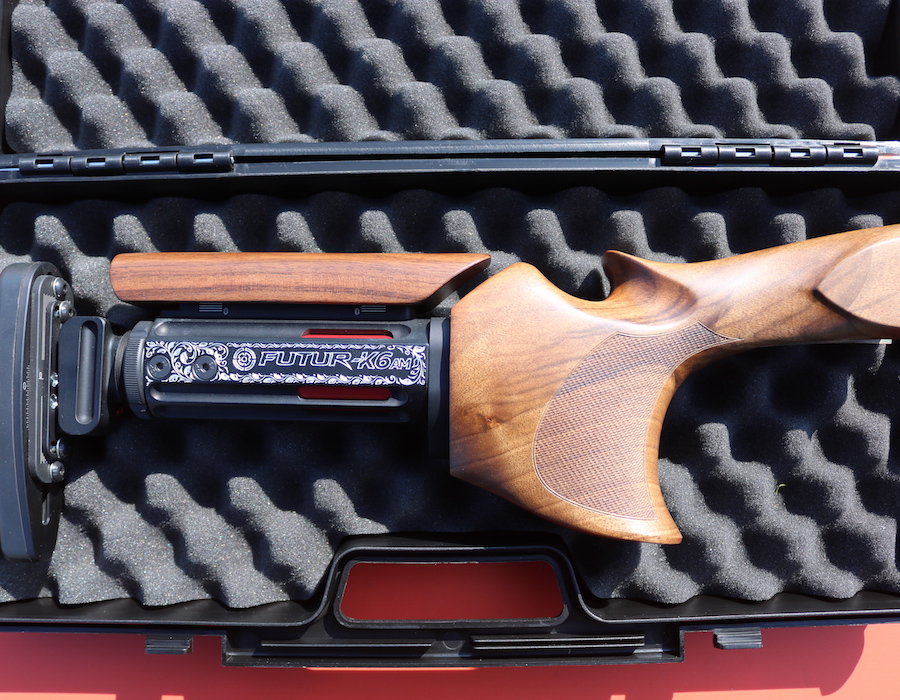
Shotgun Stock
The stock is one of the most important parts of a target shooting shotgun since it allows the shooter to correctly align the rib to the aiming line and then direct the shot at the target.
If the stock is not perfectly calibrated based on the physique of the shooter, it is practically impossible to get good results because even if the shooter perceives being aligned and aiming the gun correctly, it will actually be misaligned. A well-placed external observer will immediately notice it.
For this reason, the stock of a target shooting shotgun is often adapted to the physique of the shooter by an experienced stock expert and/or gunsmith.
Sometimes they can also understand that with experience some shooters can slightly modify their shooting technique and shouldering the shotgun, in these cases, may sometimes be necessary to readjust the stock.
That’s why manufacturers offer a wide range of stocks, even very different in shape and size, to give every shooter the chance to find the ideal size.
On average, we can say that the length of a stock is:
- Around 360 mm for hunting shotguns
- It can reach up to 370 mm for shotguns dedicated to shooting sports
In fact, a shorter length guarantees a more immediate aim, very important when hunting, where shooting is often more instinctive. On the contrary, a longer stock facilitates the acquisition of targets and their pursuit over long distances with a slightly more fluid swing.
Folds are very important when talking about stocks. Hunting shotguns have more marked folds than platform shotguns because in target shooting we often have to engage targets that tend to rise.
In the Skeet, instead, you can use shotgun folds similar to those of hunting shotguns. In fact, in this case, the trajectory of the targets is similar to that of game, which is often pursued in trajectories that go downwards/side to side.
Stocks can also have lateral deviations called “casts”. They usually range from 4 to 8 mm and from 6 to 11 to the muzzle. Deviations are displacements of the stock’s axis to the right or left and may be necessary in the case of right-handed or left-handed shooters or those with a particular physique, above all concerning the upper part of the bust.
Deviations that are too accentuated are often not recommended because they can cause the weapon to rotate after the first shot and thus make it more difficult to aim and engage successive targets.
In addition to these important changes, stocks can be customised in many other ways such as:
- Inserting folding variators
- Adding or removing wooden shims based on calcium
- Adding or removing recoil rubber pads
Given the endless possibilities for customisation, more and more shooters now prefer to mount adjustable stocks that allow them to find the ideal setting by customising every aspect of the stock. The advantage of adjustable stocks, as well as extreme personalisation, is that it easily returns to previous configurations.
Length of barrels and ideal bottlenecks for discipline
Many are convinced that depending on the discipline one must necessarily use barrels of a certain length.
This is certainly true, but a lot also depends on the type of shooter and above all on their shooting technique:
- Longer barrels are preferred by shooters who have a more reflective approach and follow the target fluidly before letting the shot go
- On the contrarary, shooters who are instead more instinctive and, seeing them on the platform, it seems as if they are pulling, will be more at ease with short barrels
This happens because long barrels are perfect for increasing the precision in engaging small targets over long distances; an example is the targets in hunting. In contrast, shorter barrels are often used in Skeet where the targets are faster and closer, thus requiring a quicker and more instinctive shot.
When choosing a shotgun, in addition to the length of the barrels, it is also very important to consider the weight.
More advanced and expensive shotguns try to reduce the weight of the barrels as much as possible and achieve a perfect balance of the gun, so even spindly shooters can take advantage of all the benefits related to the length of the barrels.
Concerning the bottlenecks, by now almost all shotguns are equipped with interchangeable chokes.
In this way, the shooter will be able to easily configure the first and second barrels according to both the practical discipline and the cartridges used.
In Trap the most suitable bottlenecks are *** or ** for the first barrel and * for the second, combined with long barrels between 72 and 82 centimetres. These configurations are ideal both for hitting long-distance targets and obtaining an optimal balance of the shotgun that facilitates tracking more angled targets.
In Skeet, the most exploited bottlenecks are instead the cylindrical or the rarer trumpet bottlenecks combined with barrels between 67 and 71 centimetres long. This allows for great speed in aiming and width of the patterns from shorter distances, typical of the targets launched in Skeet.
On the other hand, very different bottlenecks between the first and second barrels can be used in hunting, since they depend essentially on the throwing patterns of this particular discipline. The length of the barrels will also depend on the shooter’s preferences.
In any case, the perfect feel of the shooter with the shotgun is always more important than the length of the barrels and types of bottlenecks.
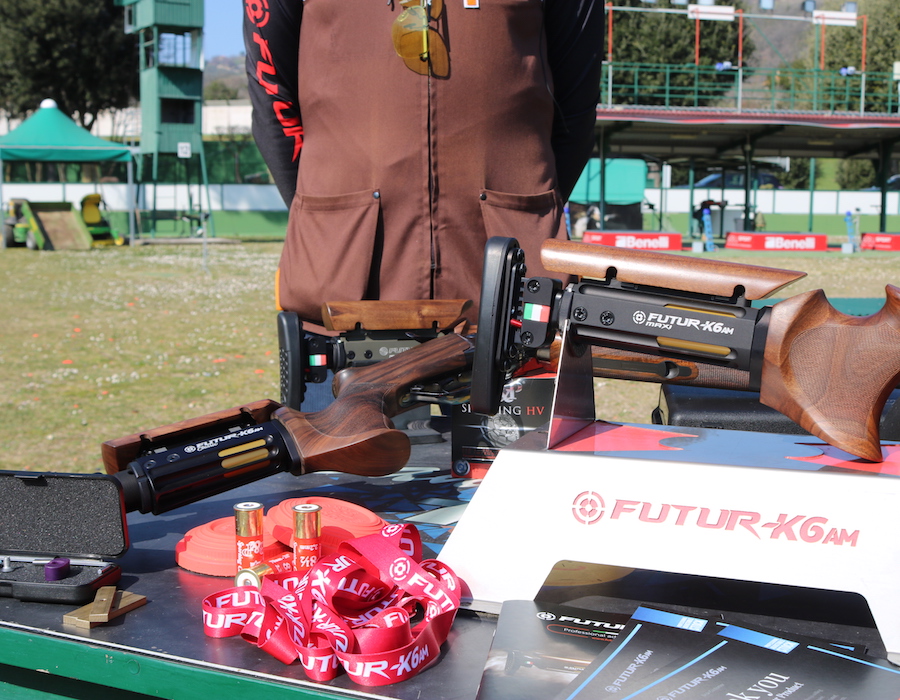
Always consider your physique and training
Paying close attention to your physique and physical strength when buying a shotgun may seem obvious but in reality, you could fall in love with the shotgun and then realise that it is not suitable for you.
Evaluate whether the gun has a weight that you can comfortably handle even in extended shooting sessions. It is not a silly assessment because it can be decisive in making the right choice and then developing a perfect familiarity with the shotgun over time.
Remember that the length of a gun barrel is an important factor that impacts its weight and therefore an important feature to guide your choice.
A 12-gauge shotgun with shorter barrels can be managed more easily than a .20 calibre with longer barrels considering the ease of swinging.
Which target shooting shotguns are the best
Considering the current Italian and international scenario it is easy to realise, also based on their diffusion, which shotguns available today are the best.
We can say that among the shotguns most used by shooters in all disciplines we certainly find Perazzi and Beretta, which are in any case accompanied by very valid Italian manufacturers but with less diffusion.
One of the leading models of the Brescia-based company is the Beretta DT11, an evolution of the Trident DT 10.
It is a shotgun that was born for Trap but can be easily adapted to all sports, from Skeet to Sporting.
All of its components, such as the action frame, barrels, cross and batteries have been chosen and worked on with almost maniacal care.
The result is a perfectly balanced shotgun, the weights of all the different components have been predetermined to ensure the best distribution of the shot patterns, an optimal balancing and swinging of the shotgun.
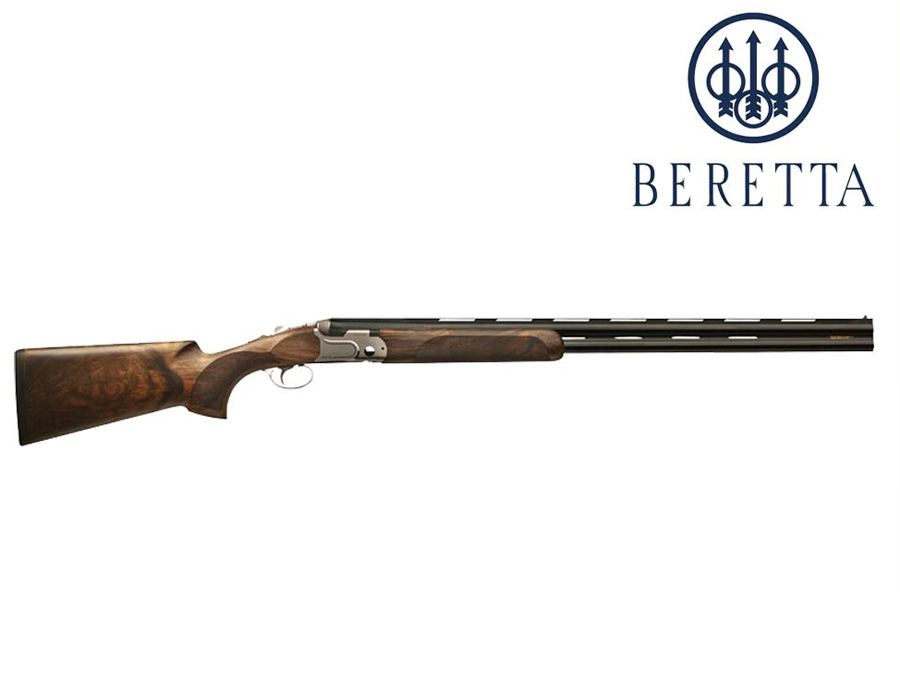
The rival of Beretta DT11 is certainly the Perazzi High Tech appreciated by many shooters.
As with the Beretta DT11, the High Tech Perazzi shotgun was also created for the Trap discipline, but versions were immediately proposed for all other sports disciplines.
The High Tech model does not need a special presentation because it has already proved its worth thanks to the national and international medals it has obtained. The quality and choice of the individual components have been carefully selected.
It is, therefore, a real competition shotgun, with a perfect balance and an ideal symbol of the craftsmanship and reliability of Made in Italy.

But there are not only Beretta and Perazzi. Remaining in the Bel Paese there are also other very valid brands that strangely seem to be much more appreciated by foreign shooters.
We are talking about Rizzini, Marocchi and Salvinelli:
- Rizzini shotguns are characterised by a perfect combination of technology and craftsmanship
- Marocchi boasts a centuries-old experience in the production of over/under shotguns dedicated to skeet shooting
- To completion, the Salvinelli branded shotguns should also be mentioned because they contain the most advanced technologies in the sector and are able to meet the needs of international shooters with noteworthy medals
In any case, regardless of the specific model, choosing one of these large companies is almost always a guarantee of success.


